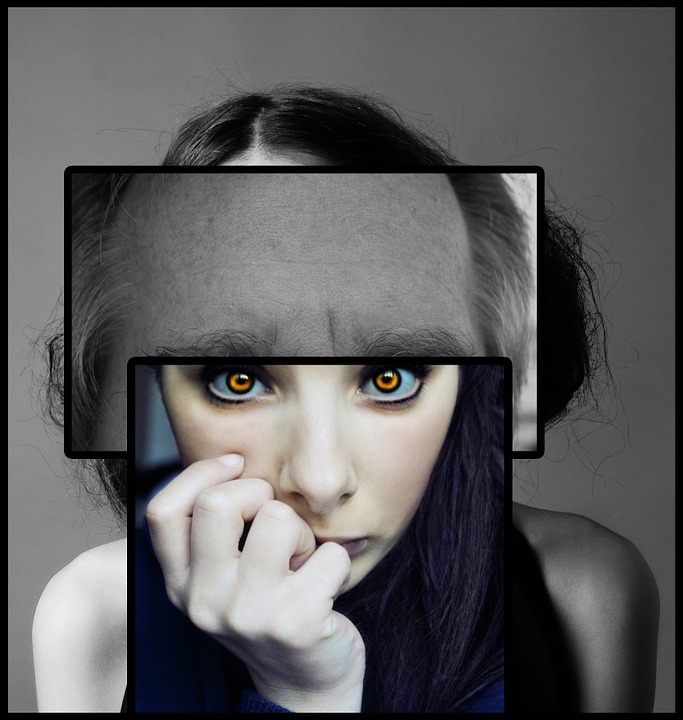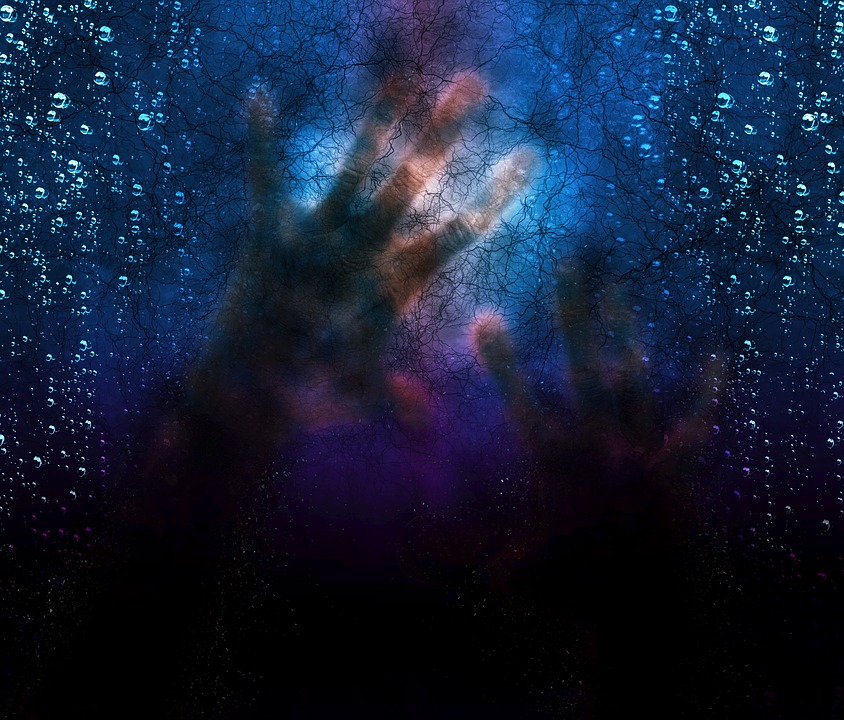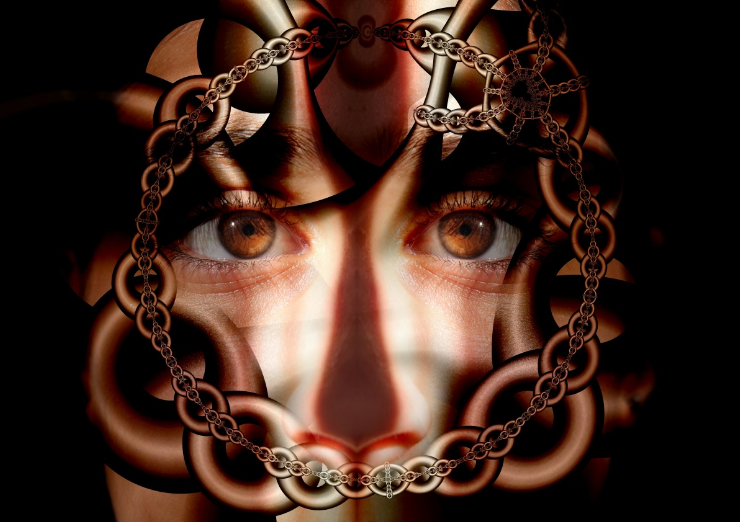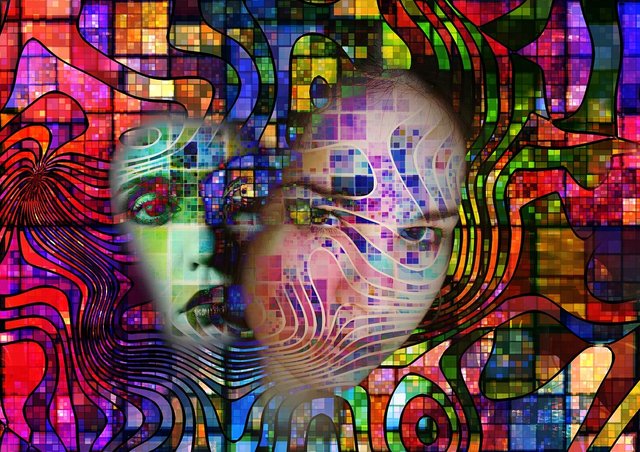Psychology: Schizophrenia And Other Psychotic Disorders #2

Source Image: Pixabay CCO
Hello everyone, this is a continuation of our last topic if you miss out on the last post do try to check it here.

POSITIVE SYMPTOMS
This topic will describe several positive symptoms of schizophrenia, including thought disorder, delusions, hallucinations, and attentional deficits.
Thought Disorder
Thought disorder represents a disruption of normal cognitive functioning and is the most dramatic and obvious symptom of schizophrenia. It involves a collection of symptoms that all seem to represent difficulty in thinking clearly or in expressing thoughts.
These symptoms may include loosening of associations, word salad, neologisms, and clang associations. The most hardly form of thought in schizophrenia is loosening of associations. People who encounter loosening of association move from a occasion to another in words, to an end where it is hard or difficult to follow their discussion. Such speech is highly difficult and annoying. It is left with the feeling that it will make sense, if only one could listen just a bit harder, but that is hardly the case.
The point of talking to someone is to communicate something, and many people with schizophrenia are unable to achieve this primary goal. The following example illustrates how dramatic, the loosening of associations in schizophrenia can be.
“I wanted to go, you know. It is no good….she was beauty….. Nobody knew me then, even though I was very old. Ah, why did they have to do that? I would have helped. My grandfather told me about the big one-it was good, is a bad sort of way. She must have been there. I have been bounded and hated since that day of infamy. You don’t understand---it hurts!”
- Positive symptoms: Clearly deviant behaviors, such as delusions, hallucinations, and thought disorder.
- Negative symptoms: Deficit symptoms-that is, symptoms that represent a lack of normal functioning.
- Thought disorder: An interference of normal cognitive functioning: the most dramatic and plain symptom of schizophrenia.
- Loosening of associations: Going from one topic to another sometimes in sentence, the most usual form of thought disorder in schizophrenia.
- Word salad: Associations so loose that the words seem random.
- Neologisms: Made-ups words.
- Clang associations ideas strung together on the basis of the sound of the words.
- Delusions Beliefs that are not actual true, that would not be obtain as true within the person’s culture, and that the person holds stance in spite of contradictory evidence.

Source Image: Pixabay CCO
Sometimes associations become so loose that the words seem random, a phenomenon called word salad:
“I am the fresh prince elect for god almighty and never again until life do us part.”
Although loosening of associations is the most common form of thought disturbance, other disturbances of thought are also found in schizophrenia. Some people with schizophrenia make up words, which are known as neologisms. For example, one individual referred to people she thought were plotting against her as “clandestites,” a term that is apparently based on the word clandestine but has no meaning except to this individual. Others string ideas together on the basis of the sound of the words, creating clang associations. The following is a classic example of a clang association. Note that this example also includes several neologisms.
“She loved to sing, ding, fling, ming, and ping, but never zing bing.”
Thought disorder may vary over time. Sometimes people with schizophrenia may show considerable thought disturbance. At other times, they may be lucid and clear. Sometimes, they are aware that their thoughts are disorganized. At other times, they seem to be totally unaware that anything is wrong.

Delusions:
Delusions are beliefs that are not objectively true, that would not be accepted as true within the person’s culture: and that he person holds firmly in spite of contradictory evidence. People may believe, for example, the other people are plotting against them. Such a belief would be called a paranoid delusion.For example, one person with schizophrenia believed that organized crime members had implanted electrodes in his brain so that they could control his behavior. He believed that hey implanted these electrodes because they wanted to take over the nightclub he managed.

Source Image: Pxhere CCO
This is a fascinating example because it shows how one must be aware about what is categorized a delusion. In this case, there were no implanted electrodes, but organized crime had indeed taken over his club, along with half a dozen other downtown clubs in the city. Another common type of delusion is the delusion of grandeur, in which people believe they are special or have special powers. James had such delusions, believing that God and chosen him to rid the world of evil.
Believing in magical powers may or may not be delusional, depending on the general beliefs of the person’s culture. Belief in Voodoo, which is widely accepted in some cultures, is not delusional in someone from such a culture. People who show severe loosening of associations may also show delusional thinking. The delusions in such individuals are often disorganized, have a bizarre quality, and typically change over time. James’s religious delusions fell in to this category. They changed constantly and often made no sense. For example, he told his doctor that he knew God had chosen him when realized that the road signs turned into crosses whenever he passed by. Other people with schizophrenia show a fixed delusional system, in which the delusions remain constant over time. These people seem to interpret everything that happens to them in the contest of their delusional system. Interestingly, such individuals often show less thought disorder and can appear normal when you talk with them about matters unrelated to their delusional system. However, once you start talking about their delusions, they will quickly impress you as seriously disturbed.
All symptoms should be evaluated within the individual’s cultural context. Believing in Voodoo, for example, may be delusional in some cultures but perfectly acceptable in others.
Hallucinations
People with schizophrenia often show hallucinations, which are perceptual experiences that feel real even though there is nothing there to perceive. For example, they may see things that are not there (visual hallucinations), hear things that are there (auditory hallucinations), or feel things that are not there (tactile hallucinations).

Source Image: Pixabay CCO
The most common hallucinations in schizophrenia are auditory, usually voices that speak to the person, although in some cultures- Kenyan, for example-visual hallucinations are common (Ndetei & Singh, 1983).
Lewis often heard voices, and at times he believed that one of the voices was that of God. Rosaline also heard voices during her brief schizophrenic episode. The voices seemed to both James and Suzanne, and they responded to anyone talking to them. Like most people who hallucinate, neither thought it unusual that they could not see the person talking or that others could not hear the voices.
Thinking is essential internal speech, which is apparent when people think out loud, talking to themselves. However, most people know that their thoughts are not a disembodied voice talking to them. There is evidence that hallucinatory voices may represent subvocal speech-that is speech that is not audible. Let’s look at the research on this question.

Examining the Evidence
Subvocal speech is common. What evidence is there that it could be the basis of auditory hallucinations? For one thing, small movements in the voice apparatus typically, though not always, occur when people with schizophrenia report auditory hallucinations (Bick & Kinsbourne, 1987; Green & Kinsbourne, 1990: Junginger & Rauscher, 1987).
In addition, the brain areas that are normally active when a person is producing speech are active during auditory hallucinations. Furthermore, occupying the voice system by having the person hum a single note will often block hallucinations, although this technique does not always work.
CLINICAL COURSE
Most disorders show a predictable clinical course-that is, a specific pattern of changes in symptomatology over time. Some people show a rapid upset of symptoms and reasonably complete recovery, although this is not a common pattern for schizophrenia. Others show episodes of severe symptomatology.
SUBTYPES OF SCHIZOPHRENIA

Source Image: Pixabay CCO
The tremendous diversity in the symptoms shown by people with schizophrenia is reflected in the subtypes of schizophrenia in the current DSM. The DSM subtypes are based largely on descriptions first provided by Kraepelin over 100 years ago. Although theses subtypes help to organize the various symptoms patterns found in schizophrenia, you should not think of them as separate disorder. It is common. For example, for people to show different symptoms patterns at different subtype diagnoses. Furthermore, unlike other subtyping strategies, such as the distinction between positive and negative symptoms, the DSM subtypes described here do not predict such variables as course and response to treatment. This topic will describe the characteristics of the subtypes known as disorganized, catatonic, paranoid, undifferentiated, and residual schizophrenia.
Ponder this….. Could any of the symptoms of schizophrenia have a positive impact on survival or reproduction!
DISORGANIZED SCHIZOPHRENIA
Disorganized schizophrenia, which was formally called hebephrenic schizophrenia, is characterized by disorganized speech or behavior and by flat or inappropriate affect. The affect often includes silliness and laughter, which typically has little bizarre and fragmented. People with this subtype of schizophrenia may also show facial grimacing and peculiar mannerisms.
They often exhibit dramatic symptomatology, although these intense symptoms may fade with time (APA, 2000).
Allen illustrates a case of an individual with a disorganized subtype of schizophrenia.

Thanks for reading.
References List:
- Positive Symptoms Of Schizophrenia: The Disorganized Dimension And Negative Symptoms
- Delusions: Excerpted from “Surviving Schizophrenia”
- Mental Health and Delusional Disorder
- Hallucinations in schizophrenia and Parkinson’s disease: an analysis of sensory modalities involved and the repercussion on patients
- Schizophrenia And Psychosis: Hallucinations And Delusions
- Negative Symptoms of Schizophrenia: Understanding Them
Further Reading:
- Cangas, A.J., Garcio-Mostes, J.M., Lopez de Lemus, M., Olivencia, J.J. Social and personality variables related to the origin of auditory hallucinations. International Journal of Psychology and Psychology Therapy. 2003;3:195–208.
- Issa BA (2010) Delusional disorder-somatic type (or body dysmorphic disorder) and schizophrenia: a case report. Afr J Psychiatry (Johannesbg) 13:61-3.
- Adrienne C. Lahti, M.D., Henry H. Holcomb, M.D., Deborah R. Medoff, Ph.D., Martin A. Weiler, M.D., Carol A. Tamminga, M.D., and William T. Carpenter, Jr., M.D. (2001) Abnormal Patterns of Regional Cerebral Blood Flow in Schizophrenia With Primary Negative Symptoms During an Effortful Auditory Recognition Task. Am J Psychiatry 158:1797-1808.
- Kiran C, Chaudhury S (2009). "Understanding Delusions" Ind Psychiatry J. 18: 3–18.
Hello! I find your post valuable for the wafrica community! Thanks for the great post! @wafrica is now following you! ALWAYs follow @wafrica and use the wafrica tag!
I use to think I am a special person like the last avatar of Vishnu. But it was bipolar disorder. I think there is a grey region where there are common traits exist between these disorders.
Absolutely
Saho is here with another disorder article.. Interesting and educative i must say. Nice one
I hope you enjoyed it.
What do they call that type of mental instability where the sufferer appears physically ok in every sense of the word, but deep down is not? Thank you.
Yes one of it is paranoid, Psychiatrist-related factors are characterised by an overemphasis on mental health to the exclusion of physical health, infrequent screening rates for metabolic abnormalities.
each of the subtypes of schizophrenia has different treatments and different incidence rates, the most common being the paranoid
True nice one